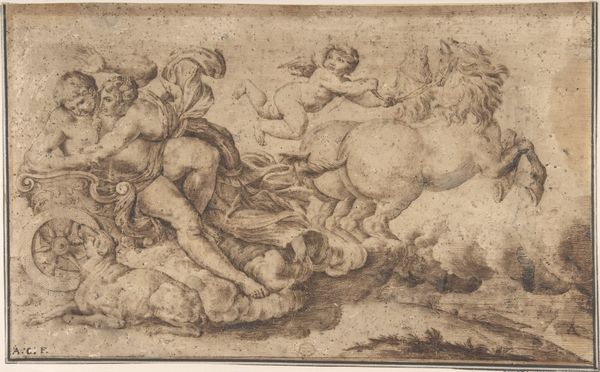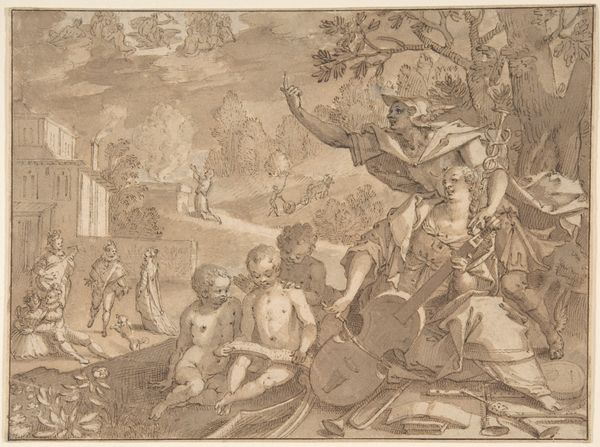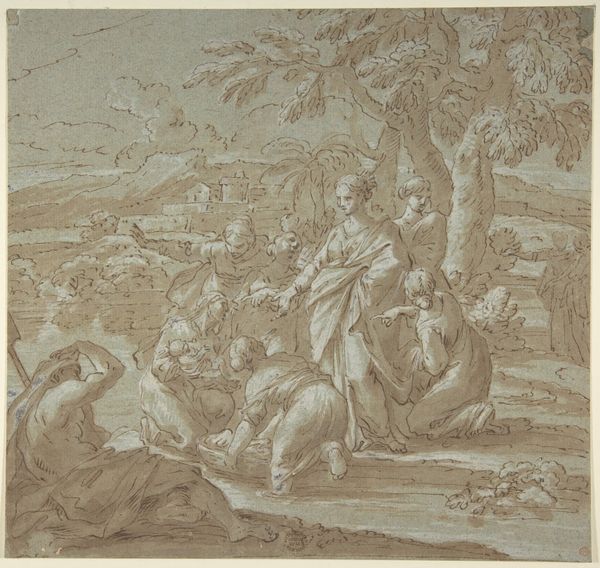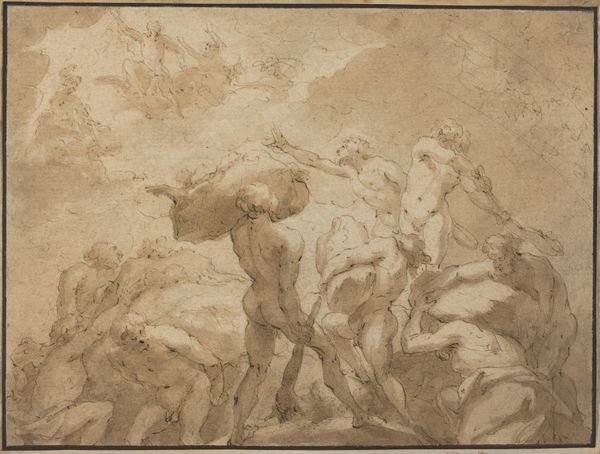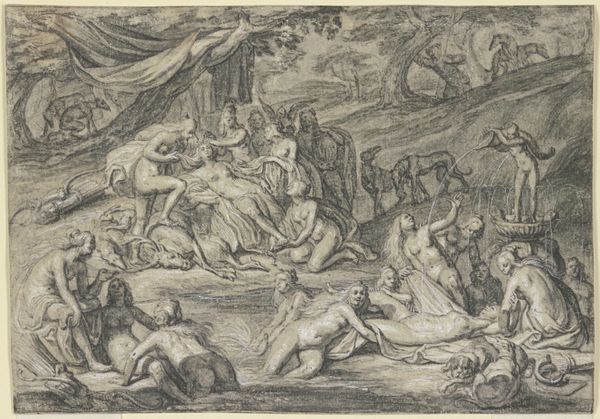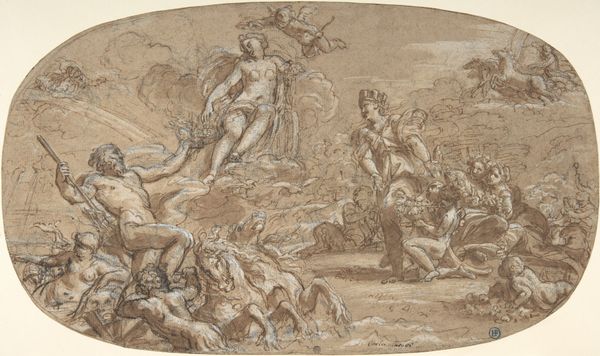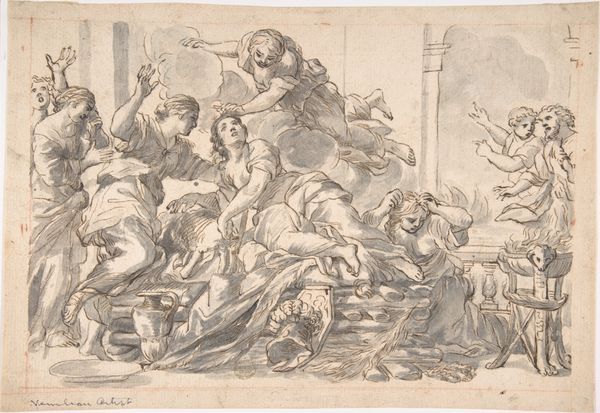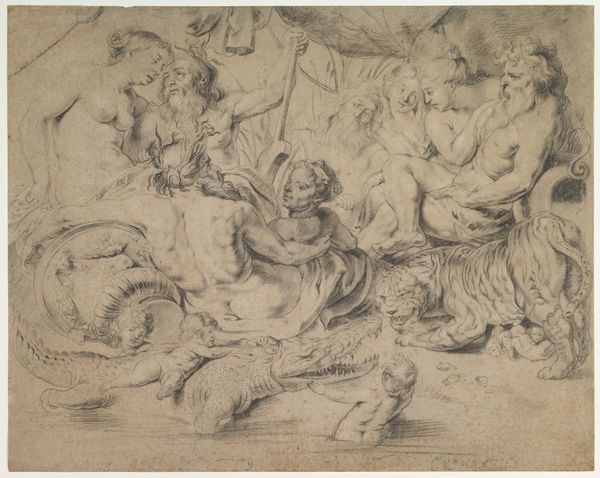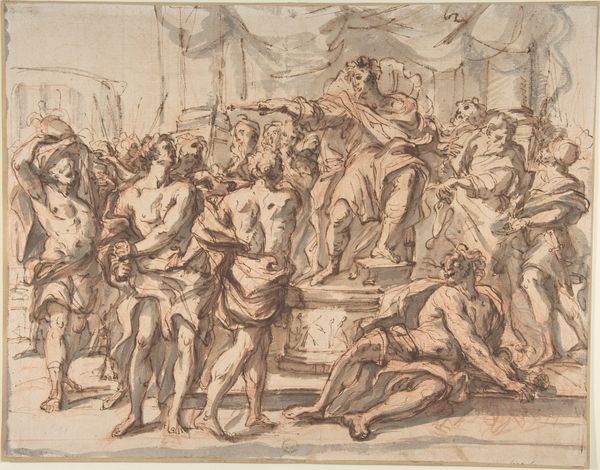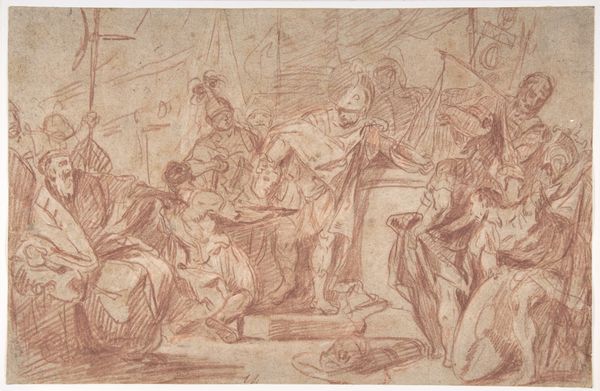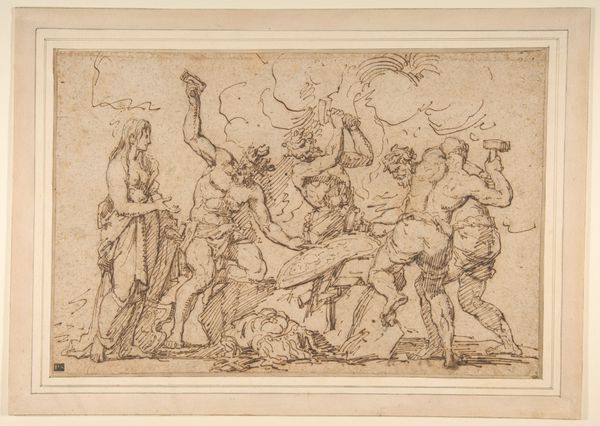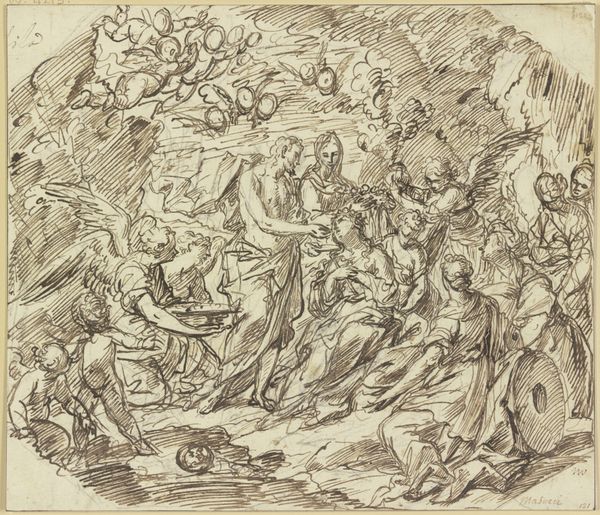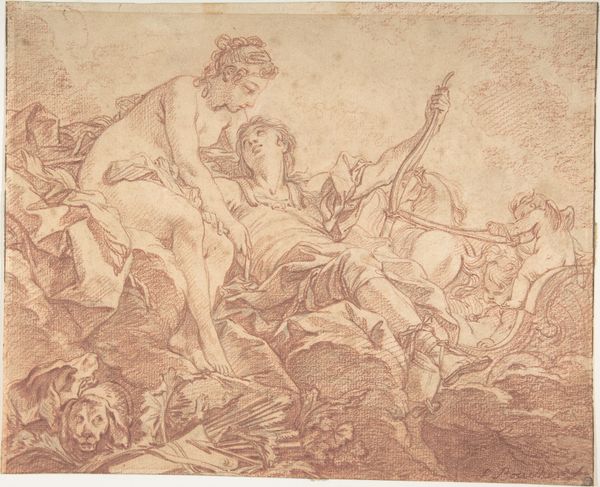
drawing, print
#
drawing
# print
#
figuration
#
11_renaissance
#
italian-renaissance
Dimensions: 7-1/8 x 10-13/16 in. (18.1 x 27.4 cm)
Copyright: Public Domain
Curator: Immediately, the swirling cloudscape captures the eye. Editor: It does; a veritable scrum of winged figures packed rather claustrophobically onto cumulonimbus cushions. Curator: We are looking at “Music-Making Angels Seated on Clouds,” a drawing made between 1611 and 1621 by Andrea Commodi. It is currently part of the collection at the Metropolitan Museum of Art. The artistic patronage of this time was, of course, closely linked with the Church. Editor: Yes, and look how the density of the lines modulates across the image. It gives the scene depth, almost like atmospheric perspective. Curator: Commodi appears to have produced this piece during a transformative era for artistic representations of faith. Religious art played a crucial public role in expressing Counter-Reformation values at the time. The proliferation of imagery meant the Church’s messaging reached new audiences. Editor: It’s interesting how Commodi employs the medium—the lightness of the drawing gives the piece a sense of ethereality, while the precision lends itself to the detail lavished on each face and musical instrument. Look how many individual faces peer out at the viewer! Curator: Religious art such as this also solidified and negotiated the place of visual imagery in society; debates raged about the idolatrous nature of imagery versus the instructional. Works such as this suggest an attempt to render the divine in a palatable manner. Editor: These angels definitely strike me as benevolent! And they seem engaged in communal harmony, though admittedly, their positioning lacks hierarchy, making them all look a little cramped. I suppose that lends to the overall visual energy! Curator: The work succeeds at a specific intersection, perhaps revealing more than initially meets the eye about art’s role within institutional frameworks. Editor: I see, it does lead you to a wider perspective on Renaissance artistic output in the Italian context.
Comments
No comments
Be the first to comment and join the conversation on the ultimate creative platform.
